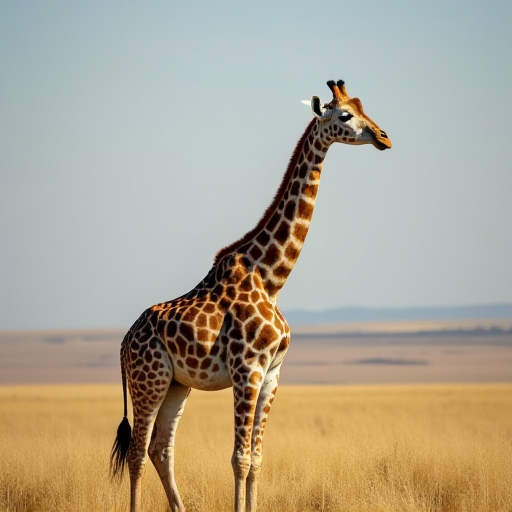
Why Do Giraffes Have Long Necks?
The long neck of the giraffe is one of the most iconic and recognizable features in the animal kingdom. This unique adaptation has fascinated scientists and the general public alike, prompting questions about its evolutionary origins and the advantages it provides. In this article, we will explore the reasons behind the giraffe's elongated neck, examining its evolutionary history, functional advantages, and the continuing scientific debate surrounding this remarkable trait.
Evolutionary Background
The giraffe's long neck is a result of evolutionary processes that have occurred over millions of years. The modern giraffe, Giraffa camelopardalis, belongs to the family Giraffidae, which also includes the okapi. Fossil evidence suggests that the ancestors of giraffes began developing longer necks around 16 million years ago during the Miocene epoch. This evolutionary change was likely driven by a combination of environmental pressures and natural selection.
Theories Explaining Long Necks
Two primary theories have been proposed to explain the long neck of giraffes: the "competing browsers" hypothesis and the "necks-for-mating" hypothesis.
1. Competing Browsers Hypothesis
The most widely accepted explanation is the "competing browsers" hypothesis. This theory suggests that giraffes developed long necks to access food sources that were unavailable to other herbivores. In the savannas of Africa, where giraffes primarily reside, competition for food can be intense, especially during the dry season when resources are scarce. By being able to reach higher branches of acacia trees and other tall vegetation, giraffes can exploit a niche that few other animals can access, giving them a competitive advantage. Additionally, they also graze on shrubs when available, which complements their diet.
2. Necks-for-Mating Hypothesis
An alternative theory is the "necks-for-mating" hypothesis, which posits that long necks evolved as a result of sexual selection rather than solely for feeding advantages. In this scenario, male giraffes use their necks as weapons in a behavior known as "necking," where they swing their heads at each other to establish dominance and gain mating opportunities. Longer and stronger necks provide an advantage in these contests, leading to greater reproductive success for males with these traits. Giraffes also use necks for communication, adding another layer of utility to this adaptation.
Functional Advantages
The giraffe's long neck is not just about reaching high foliage or competing for mates. It offers several other functional advantages:
-
Enhanced Vision: The elevated vantage point allows giraffes to spot predators from a distance, giving them more time to react and escape.
-
Thermoregulation: The large surface area of the neck may help with heat dissipation, which is crucial for an animal living in hot climates.
-
Efficient Locomotion: Giraffes have a unique gait, moving the legs on one side of the body simultaneously, which is facilitated by their long necks helping to maintain balance.
Scientific Debate
Despite the popularity of the competing browsers and necks-for-mating hypotheses, the scientific community continues to debate the primary drivers of neck elongation in giraffes. Some researchers argue that a combination of both natural and sexual selection pressures likely contributed to the evolution of the long neck. Others suggest that additional factors, such as changes in climate and habitat over time, played significant roles.
Recent studies have also examined the biomechanics and physiological aspects of giraffe necks, providing new insights into the complexities of this adaptation. For example, researchers have looked at the vertebral structure and cardiovascular adaptations required to support such a long neck.
Conclusion
The long neck of the giraffe is a classic example of evolutionary adaptation that highlights the intricate interplay between environmental pressures, natural selection, and sexual selection. While the exact reasons for the evolution of this remarkable trait continue to be studied and debated, it is clear that the giraffe's neck serves multiple purposes that have allowed this species to thrive in its habitat. As research advances, we may gain even deeper understanding of the evolutionary history and biology of these fascinating animals.
